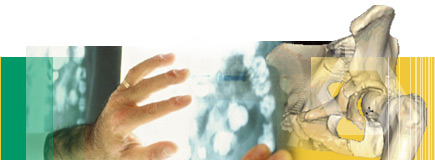|
Terminology Abbreviations and Definitions
1. Terminology Abbreviations:
| ADIA Australian Diagnostic Imaging
Association |
| ACR American College of Radiology |
| AOA Australian Orthopaedic
Association |
| BIR IHE Basic Image Review
profile |
| CD Compact Disc |
| CR Computed Radiography |
| CT Computed Axial Tomography |
| DI Diagnostic Imaging> |
| DDI Digital Diagnostic Imaging |
| DICOM Digital Imaging and Communications in Medicine |
| DIN Deutsches Institut für
Normung (German Institute for Standardization) |
| DIRWP Digital Imaging RACS Working Party |
| dpi dots per inch |
| DR Digital Radiography |
| DVD Digital Versatile Disc |
| GB Giga byte |
| GBit Giga bit |
| GIF Graphics Interchange Format |
| GSDF Grey Scale Display Function |
| HTML Hypertext Markup Language |
| IHE Integrating the Healthcare
Enterprise |
| IOD Information Object Definition (DICOM) |
| ISO International Organization for Standardization (www.iso.org) |
| JPEG Joint Photographic Experts
Group |
| JPEG 2000 a
wavelet-based image compression standard, created by the Joint Photographic
Experts Group committee in 2000 |
| LAN Local area network |
| LCD Liquid display device – digital display |
| LUT Look Up Tables. Relates to DICOM greyscale calibration |
| MB Megabyte |
| MDCT Multi-Detector (row) Computed
Tomography (“multi-slice CT”) |
| MP Mega pixel |
| MPEG Moving Picture Experts Group |
| MRI Magnetic Resonance Imaging |
OFFIS Media
Exchange Certification Project of the German Radiological Society
(Deutsche Röntgengesellschaft e. V.)
|
|
PACS Picture Archiving and Communication System |
|
PDIPortable Data for Imaging (IHE Profile) |
|
PNG Portable Network Graphics |
|
RACSRoyal Australasian College of Surgeons |
|
RAID Redundant Array of Inexpensive Disks, or
Redundant Array of Independent Disks |
|
RANZCRRoyal Australian and New Zealand College of
Radiologists |
|
RIS Radiology Information System |
|
SOP Service Object Pair |
|
SMPT
Society of Motion
Picture and Television Engineers standard |
|
SPECT/CT Single Photon Emission
Computed Tomography/CT – a fusion of nuclear medicine imaging and CT |
|
SSD Solid State Drive |
|
UDF Universal Disk Format |
|
USB Universal Serial Bus |
|
USB SSD Solid State Drive memory that connects with
a computer via a USB interface |
|
WAN Wide Area Network (BAN – Broad Area
Network) |
|
XDS-I Cross Enterprise
Document Sharing (from IHE to facilitate clinical documents sharing) |
|
XHTML Extensible Hypertext
Markup Language |
2. Definitions:
Diagnostic Imaging Provider -
the person(s) who performs or supervises the performance of the diagnostic imaging
service, and who usually provides the primary analysis and opinion on the
obtained images. This typically refers
to radiologists, but may also include vascular surgeons, cardiologists,
obstetricians and any other person who is appropriately accredited by the local
regulatory authority.
Diagnostic
Quality Image - an image that is comparable in quality and presentation
to that used by radiologists in reporting.
In
some cases it is important that a diagnostic quality image is measurable, and thus capable of being
analysed to produce linear dimensions that the clinician will unambiguously
understand. Any technique may be used
as long as the end user is able to obtain an accurate, reproducible linear
measurement within the particular clinical environment
Film - transparent polyester sheets, by
which diagnostic images are distributed in hard copy as continuous tone shades of
grey. While such film can be generated
by either photographic / analogue capture, or laser printed images derived from
a digital image, for the purposes of this document, both forms are grouped
under the term film.
Lossless - data which
when decompressed produces images identical to the original
Lossy - data which
when decompressed produces images of different (usually reduced) quality than
the original
Reduced Quality Image –
Any image that is not a Diagnostic Quality Image
Scout
images (also known as “scout
films”, “pilot images”, “topograms”, “surviews”) - images on which the location
of cross-sectional image(s) relative to key anatomical landmarks may be
displayed. The scout image may be a
digital projection radiograph (like a traditional ‘X-ray’), a cross-sectional
image in another plane, or a projection image of a 3-dimensional model. For spine studies, the scout images will
typically be either a lateral projection radiograph (CT), or a mid-sagital
cross-sectional image (CT or MRI).
Scout images are used :
(1) to aid the technologist in planning the location(s) at which
cross-sectional images are to be obtained, and choosing their orientation ;
(2) to enable the viewer of a cross-sectional image to define its relationship
to the overall anatomy of the patient.
Source
image / Source data – CT or MR imaging data which is generally the
actual voxel information obtained during the cross sectional image capture, and is an intermediate step
between the image acquisition and the processed image data usually used for
diagnostic interpretation - sometimes referred to as “thins” in CT parlance. More complicated post-processing can convert
these images into 3D representations of some or all of the anatomy included in
the original part of he patient that was imaged – this is useful for
unobstructed display of, e.g., bones, or arteries.
Although they may or may not be utilised during the
reporting process, these data
are available to reporting radiologists from the imaging modality itself for further processing or re-processing if required. Almost all are in DICOM
format, and can be exported on PDI-compliant media if desired, however the data
sets may be very large (e.g. >1000 512 x 512 matrix
images), and can exceed the storage capacity of a single CD (or even a single
DVD). Some specialised applications (e.g. some MR spectroscopy, 3D angiography,
3D ultrasound, some scintigraphy) use non-DICOM data formats, though many of
these are moving towards DICOM representations.
|

